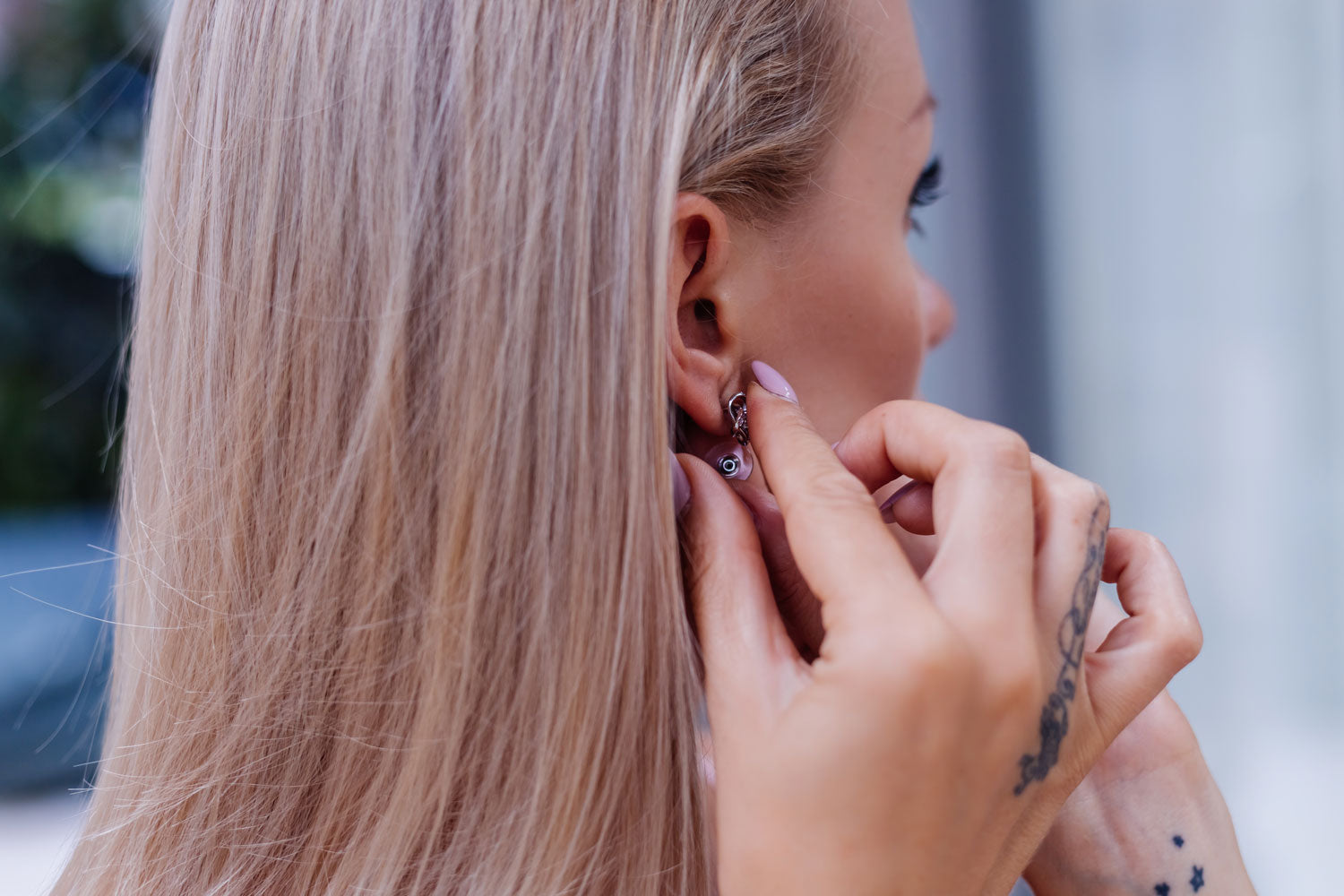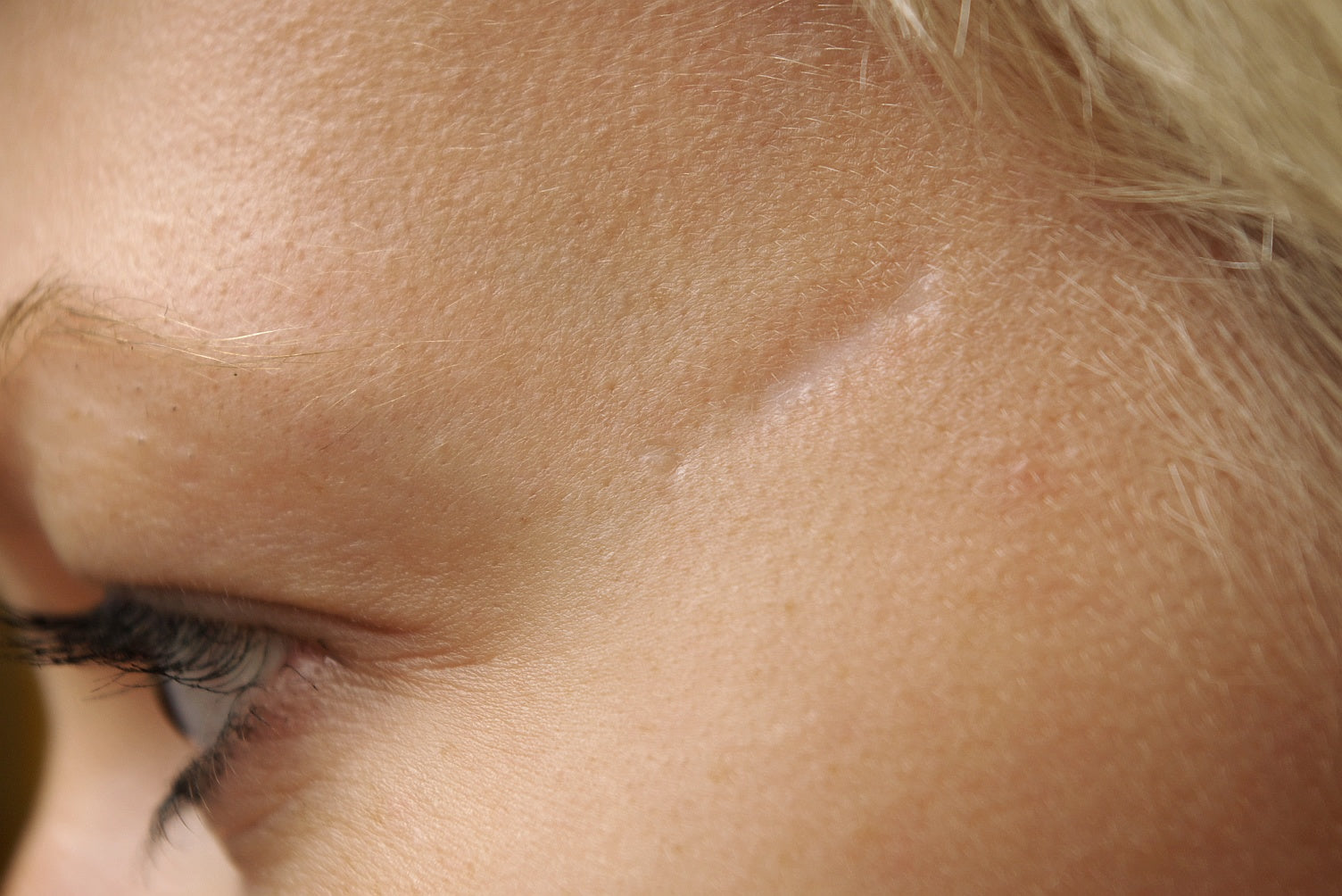Anyone with more than a few piercings has probably experienced this – you take your jewelry out to clean it, or perhaps for a medical procedure, and discover you cannot get it back in afterwards. Or perhaps you take a piercing out, intending to retire it, and then change your mind. What now? Is your piercing lost forever?

Take heart, there is a difference between a piercing that has shrunk and a piercing that has closed. One of the reasons people generally wear jewelry in their piercings 24/7 is because the jewelry keeps the piercing open. That sounds really obvious but let’s take a moment here. The fistula, once healed, will begin to shrink down without jewelry in it. Consider stretched lobes. When the plugs are removed, the holes begin to shrink. If the plugs are left out for too long, the holes may shrink to where they are no longer able to accommodate the old plugs. This is true of all piercings but just because you can’t get the same size plugs in anymore doesn’t mean that the holes have closed. They’re just smaller.
So, if you remove your piercing jewelry the hole may shrink but not close entirely. The difference is that instead of just being a smaller diameter fistula, a closed piercing has healed itself entirely shut. This is more likely to happen with newer or still-healing piercings and will definitely happen sooner with both. With a fresh piercing, it’s easier for the still-healing cells inside the fistula to simply grow together and seal the piercing. This is also the case with an irritated piercing or one that had poor quality jewelry in it. And certain piercings in particular such as oral piercings or nostrils are more prone to closing without jewelry. So, if you lose your jewelry or can’t get any jewelry inserted, it is really important that you get to a piercer within 24 to 48 hours if you want to save it. You may have longer but, in this instance, sooner is better.
Once you get to the piercer’s, they will determine if jewelry can be re-inserted into the piercing. In order to do this, the piercer will use something called an insertion taper. It looks similar to the tapers we tell you not to use on your earlobes (we’ll come back to this) but it is metal and hollow. Since the piercing has only shrunk, the piercer will simply use the taper to stretch the fistula and pull the jewelry through the hole, putting the jewelry back where it belongs. This process can be a bit uncomfortable, possibly even more so than the initial piercing was. However, unlike the initial piercing, it will heal far more quickly and should be completely back to normal in about 2 to 4 weeks.
Why is using a taper ok for a shrunken piercing but not ok to use for stretching your earlobes? Using a taper instead of allowing time and gravity to stretch your lobes involves using force to stretch the fistula. This can lead to microtears and possibly even a nasty blowout. That risk is still present when tapering open a piercing. However, it is a trained piercer wielding the taper in re-opening a piercing. And since dead stretching is a straightforward process that anyone can do, there is simply no need to run those risks when stretching your lobes. In the case of re-opening a piercing, you don’t have the option of something like dead stretching. Tapering a piercing open is a last resort (but perfectly sound) option for when your piercing has shrunk to the point where you simply cannot get jewelry in it by yourself.
So, the next time you drop your jewelry down the sink drain (Always close the drain!) or you have to take your jewelry out for some reason, don’t panic. Just get to a trusted piercer as soon as possible if you cannot get jewelry back into your piercing. They can re-insert it for you so long as it hasn’t had a chance to heal shut. Nobody likes to lose a piercing before it’s time and as long as you remember that tapering it back open (by a reputable piercer!) is an option, you can rest a little easier. Happy piercing!






